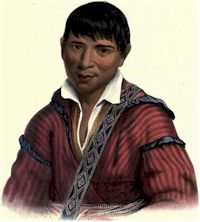Dakota or Sioux Indian Tribe Photo Descriptions
The word Dakota means united, confederated, or many in one, and designates the tribe from which the family takes its name. They seldom or never willingly acknowledge the title Sioux first given them by the French, and now by all whites. There are many theories as to the origin of this latter name, the most acceptable of which is that it is a corruption of the word Nadouessioux a general Chippewa designation for enemies which was gradually applied by missionaries and traders, through an imperfect understanding of the language, to the tribes thus designated. Governor Ramsey, of Minnesota, thought that … Read more

